Moto Guzzi V7 Sport – Italy’s first real sporting Superbike
Moto Guzzi V7 Sport
With Ian Falloon
As Moto Guzzi entered the 1960s they could claim one of the finest sporting traditions of any motorcycle manufacturer. Few could match their total of 14 World Championships, but even Moto Guzzi became a casualty in the slump in demand for motorcycles during that decade.
Moto Guzzi was saved by the V7, the first sketches originating back in 1958 when the great engineer Carcano drew up plans for a 500cc V-twin engine to power a sporting Fiat car. When Moto Guzzi went into receivership in 1966 the entire workforce was sacked, including Carcano.
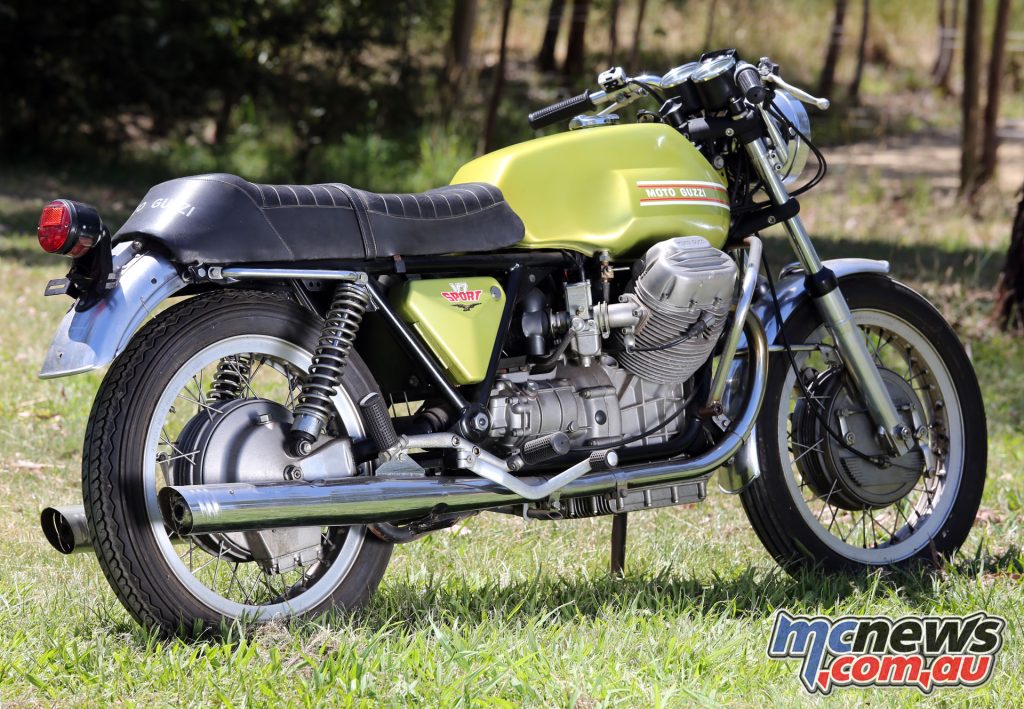
Although invited to return, Carcano was too proud to do so, leaving the V7 project unfinished until Lino Tonti became chief engineer. Lino Tonti came from Bianchi, but had been associated with Benelli, Aermacchi, Mondial, and Gilera. Like Carcano, Tonti also had strong racing connections, being involved with the Paton and Linto racing machines that bore his name.
The idea for a sporting V7 grew out of the successful record breaking machines of 1969 that set 19 new world speed records. Following this, chief engineer Lino Tonti was briefed to build a street bike suitable both for production and production-based racing.
It needed to be capable of 200 km/h, weigh less than 200kg, and have a five-speed gearbox. Thus the V7 Sport was born. But it wasn’t an easy birth. Due to strikes, Tonti, with the help of two former Aermacchi colleagues Francesco Botta and Alcide Biotti, built the prototype V7 Sport frames in his own workshop.
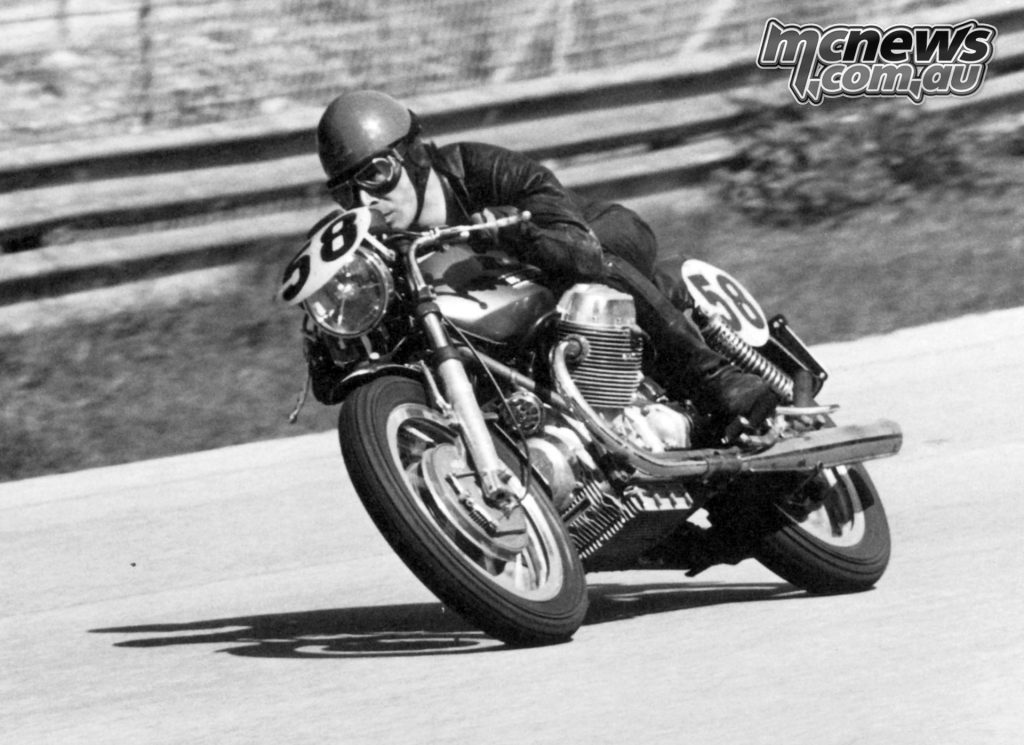
When Tonti unveiled his creation in June 1971 the press was stunned. Not only did the new Sport look purposeful, unlike any other sporting motorcycle at the time it had shaft drive. Homologation of the V7 Sport for production racing saw the first examples built in the racing department, these being the “Telaio Rosso” (red frame) models.
Now highly prized by collectors the Telaio Rosso featured many individually crafted components. To ensure the V7 Sport was competitive, Mike Hailwood tested it at Monza, afterwards proclaiming the V7 Sport was the best handling street bike he had ridden.
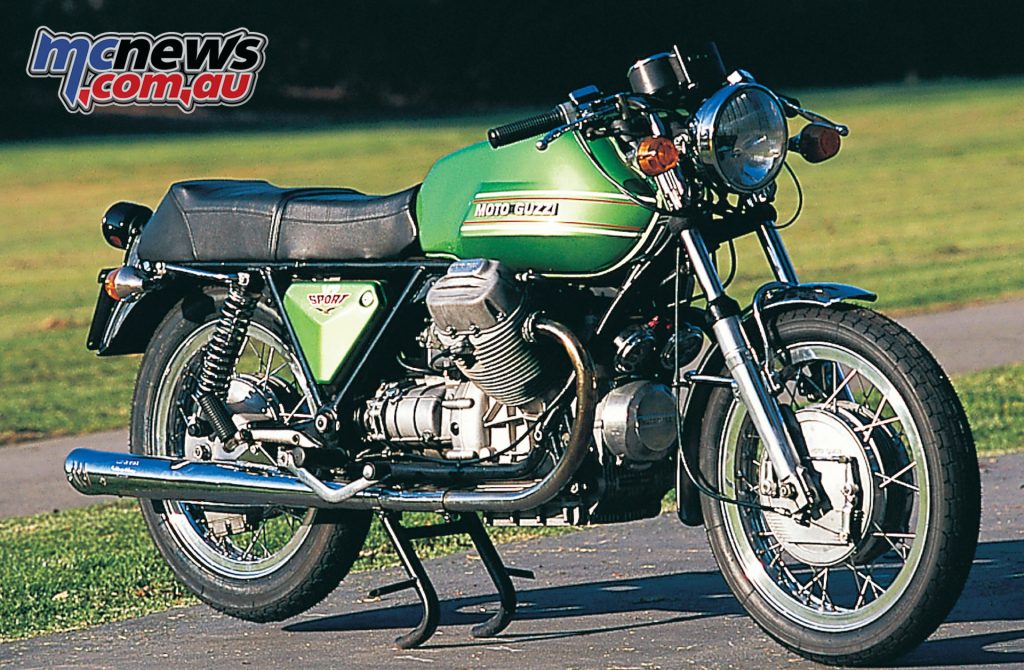
Regular production commenced, later examples similar if not quite as exotic as the Telaio Rosso. V7 Sport production lasted through until 1974. Over the next few years it gained mandatory left side shifting and some of the final versions were offered with an optional Brembo twin disc front end.
To enable the V7 engine to fit a lower frame, Tonti started by reducing the height. A much smaller 180-watt Bosch alternator was mounted on the front of the crankshaft, and to conform with homologation requirements for 750cc production racing in Italy the capacity was reduced slightly, to 748cc.
The V7 Sport received a new camshaft with both more valve lift and increased duration and with a claimed 70 horsepower at 7,000rpm it was one of the most powerful motorcycles available in 1971.
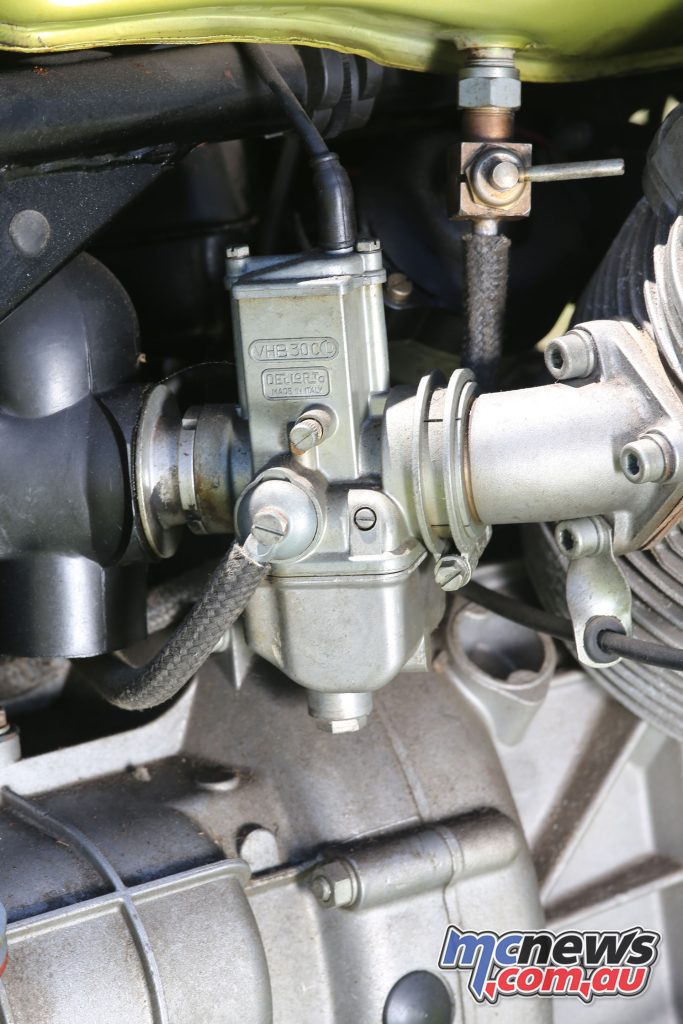
While these engine modifications were significant, it was the design of the frame that really set the V7 Sport apart. With more space between the cylinders, Tonti created a long low frame with the backbone between the cylinders. Along with the unique fully detachable lower frame rails to facilitate engine access, the double-cradle frame comprised nearly straight tubes and would eventually feature on the entire range of large twins.
The result was an extremely compact motorcycle, with a seat height of only 750 mm. To accentuate this lowliness, 18-inch Borrani alloy rimmed wheels were fitted front and rear. Brakes were drums but during 1974 twin front discs were also sometimes fitted, with a rear disc option on request.
The 35 mm front forks with polished alloy fork legs were manufactured by Moto Guzzi and included sealed internal dampers. Although they were a highly innovative design, cartridge-type forks later becoming normal, these forks were not particularly sophisticated and effective.
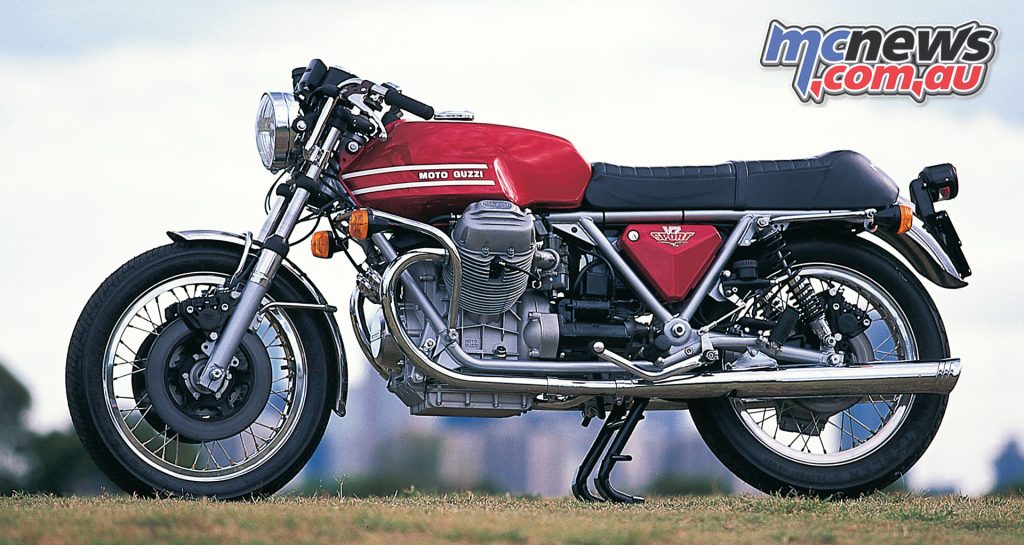
The V7 Sport abounded with quality components, including Koni rear suspension units, a hydraulic steering damper, and clip-on handlebars that could be adjusted both fore and aft, and up and down.
The petrol taps were solenoid operated and the rear stainless steel guard hinged to allow the rear wheel to be removed. Neat touches abounded and there was even a courtesy light that operated when the seat was opened.
Although the V7 Sport represented a remarkable transformation from the V7, it still wasn’t exceptionally light despite its compact dimensions. Only through excellent design was the weight of 206 kg well disguised. However, when it came to performance the V7 Sport lived up to its expectations with a claimed top speed of 206 km/h and the V7 Sport was one of the fastest production motorcycles available in 1971.
Italy’s first real sporting Superbike, the Sport could match anything available at the time. Built as the embodiment of an engineer’s ideal, and not compromised by economics, fashion or marketing, the V7 Sport was one of the greats, not simply a great Guzzi.
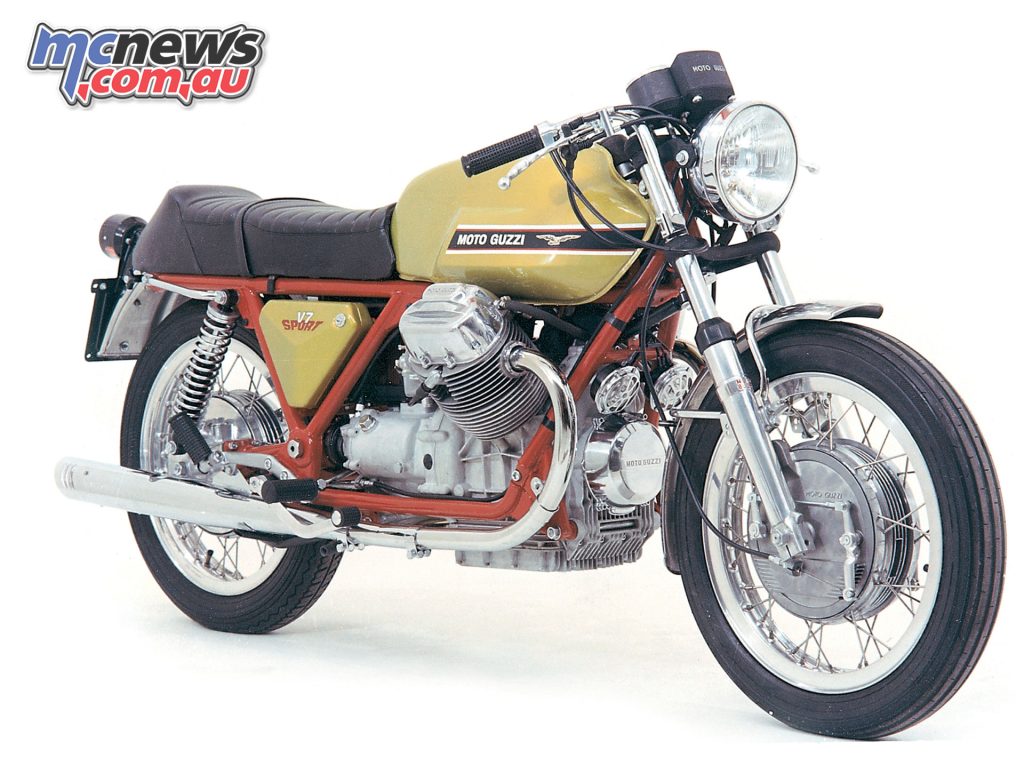
Moto Guzzi V7 Sport Specifications
| Moto Guzzi V7 Sport Specifications | |
| Engine | Longitudinally mounted 748 cc OHV 2-valve per cylinder, air cooled, four-stroke, V-twin, 9.8:1 compression ratio, dual 30 mm Dell’Orto carbs each with cold-start levers, wet sump, electric start, crank-mounted alternator |
| Bore x stroke | 82.5 × 70.0 mm |
| Transmission | Five-speed, shaft drive |
| Suspension | Telescopic forks (F), Twin shocks adjustable for preload |
| Brakes | 220 mm double-sided with twin leading shoes per side drum (F), 220 mm twin leading shoe drum (R) |
| Tyres | 3.25-18 with WM2 aluminium rim, 3.50-18 with WM3 aluminium rim |
| Wheelbase | 1500 mm |
| Dimensions | 2200 mm |
| Width | 710 mm |
| Seat height | 760 mm |
| Weight | 206 kg dry |
| Fuel capacity | 17 L |